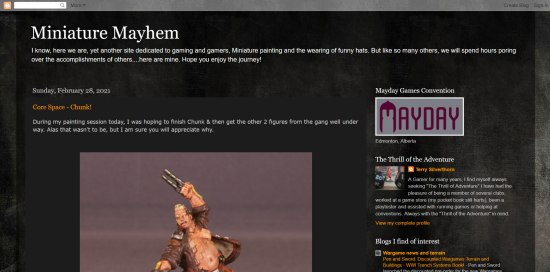A palette is a must-have tool for the miniatures painter. For years, I have used an old dinner plate as a palette. This has worked fine for many years, and for cleaning, could be put in a dishwasher. As I began using inks, I began using a small plastic palette with 'wells'. I now use cheap plastic palettes exclusively.
Cleaning acrylic paint from the plastic is no problem, as you will find that acrylic paint once dry will peel away. I did find that inks were much different. If the plastic scratched from digging out dried ink, cleaning was impossible.
I discovered the following trick by accident and have used this for many, many years to clean my plastic palettes.

My examples are two palettes. The one on the left was found in a box of old painting supplies, and is about six years old. The other palette is much newer, and has 4 different inks dried in the wells.
Cheap white glue is all you will need to clean these palettes.
I start by filling each well about one-quarter full. Then I take a craft stick and spread the white glue, coating the well and any flat surfaces that are stained. (You can also add a bit of water to the glue to assist with coverage.)

For dramatic effect, I have covered half of the palette on the left.
Let your palette sit overnight, allowing the white glue to dry completely.
Now the fun part. Using a craft knife (I prefer a blade larger than #11), poke into the dried glue and peal away all the paint and ink. You can see how well it will take the color from the cracks and scratches!

The palette on the left will get some additional white glue for its left side, as well as around the edges. Keep in mind that when spreading the glue, a thin layer is all that is needed.
This little trick works well on all types of palettes - porcelain, glass, aluminum or plastic.









